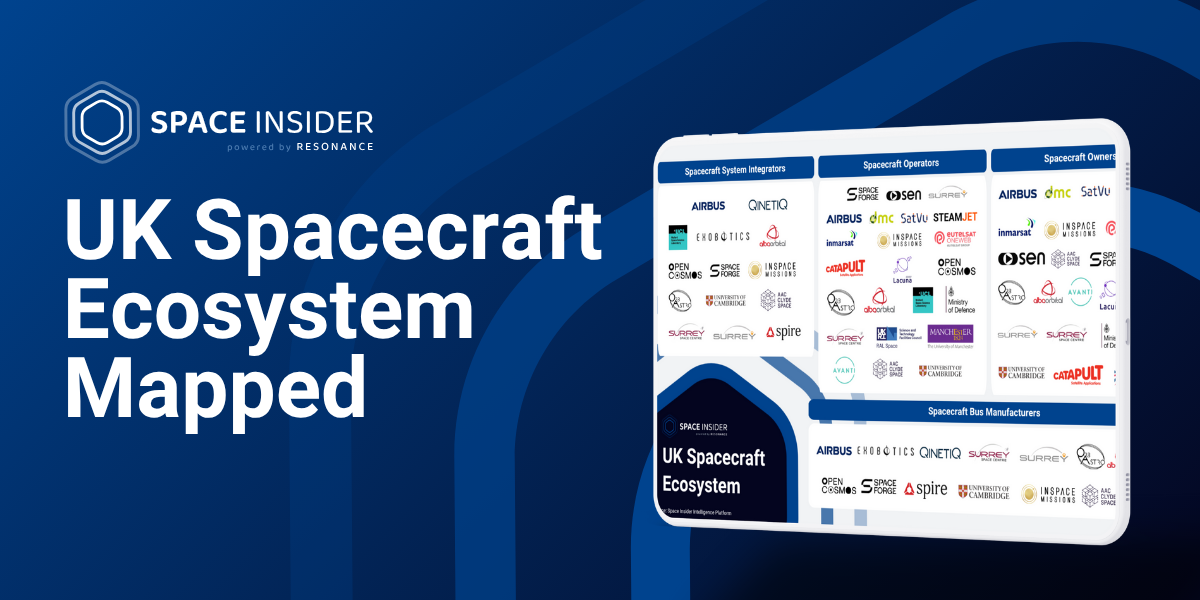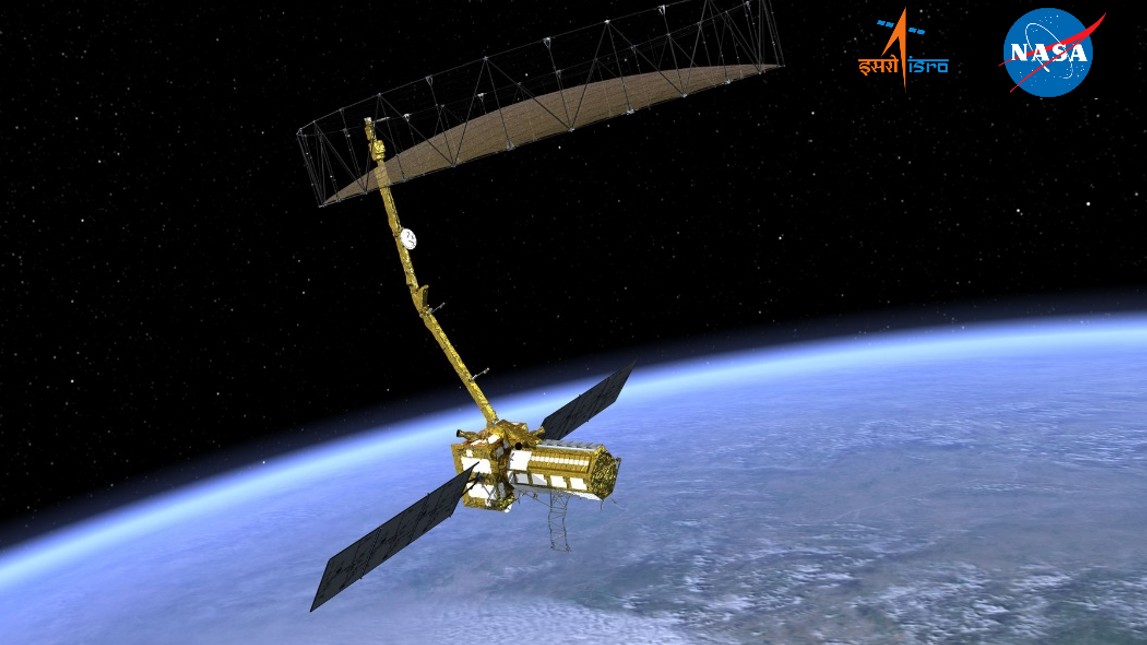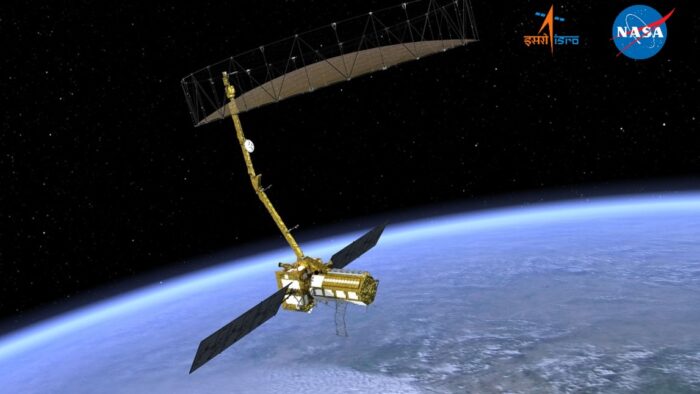Insider Brief:
- The UK has a growing role in Europe’s spacecraft ecosystem, contributing to over 1,000 launched spacecraft through 28 core entities across ownership, integration, and manufacturing.
- While commercial activity dominates by volume, civil and military missions speak to a more balanced and diverse national capability, especially when excluding megaconstellation programs.
- Companies such as SSTL, Airbus UK, and Alba Orbital illustrate the UK’s strengths in smallsat innovation, vertically integrated mission delivery, and emerging interplanetary infrastructure.
- Download the full UK Spacecraft Market Map for detailed data on sector distribution, program timelines, and the organizations contributing to the UK.
As the global space economy moves towards distributed infrastructure, national resilience, and commercial constellations, the United Kingdom has gained strategic prominence within Europe’s spacecraft landscape. While not yet a manufacturing powerhouse on the scale of the United States, the UK has steadily expanded its role in spacecraft development, particularly in smallsat production, mission integration, and dual-use capabilities spanning the commercial, civil, and defense sectors. Building on its historic strength in satellite services and downstream applications, the UK is now advancing toward a more integrated position in the broader space value chain.
Space Insider’s UK Spacecraft Market Map identifies 28 primary entities responsible for Spacecraft Ownership, Operations, System Integration, and Bus Manufacturing. Collectively, these organizations have contributed to the launch of over 1,000 spacecraft since 2010, speaking to a well-developed and growing industrial footprint.
For this market map, we include only primary contractors—UK-based entities (or UK subsidiaries) that take on end-to-end responsibility for spacecraft ownership, operations, system integration, or bus manufacturing. The scope is limited to missions launched between 2010 and June 25, 2025. We exclude subcontractors, payload and component manufacturers, launch providers, and any companies whose spacecraft have not yet launched, including planned or upcoming missions.

A Spacecraft Ecosystem in Motion
Space Insider tracks more than 1,000 organizations across the UK space ecosystem, spanning upstream, midstream, and downstream segments. Within this larger network, our focused analysis surfaced 28 central entities involved directly in delivering complete spacecraft missions. These include commercial giants, government collaborators, and integrated smallsat developers whose contributions collectively define the backbone of the UK’s orbital output.
These companies have driven the launch of 1,018 spacecraft between 2010 and mid-2025, speaking to the UK’s capability to both support international missions and lead them. From high-throughput broadband satellites to agile CubeSats and lunar communications relays, the UK spacecraft sector is increasingly diverse in both technical output and mission type.
Mission Segmentation: Communication Connectivity Leads the Way
The lion’s share of UK spacecraft activity across civil, military and commercial sectors has centered on communications missions, with significant UK involvement in global programs such as Eutelsat OneWeb. Between 2019 and 2024, Eutelsat OneWeb launched 656 low Earth orbit (LEO) satellites as part of its first-generation broadband constellation. While manufacturing was based in the United States, the company maintained operational and strategic presence in the UK prior to its merger with France-based Eutelsat. Eutelsat OneWeb’s scale and partial UK footprint reflect the country’s broader role in enabling commercial satellite constellations, even when final integration occurs abroad.
In the Earth observation category, Alba Orbital stands out for its PocketQube platforms, which are ultra-compact 5 cm pico-satellites used for Earth imaging, remote sensing experiments, and educational missions. Through its Unicorn satellite platform and Albapod deployers, Alba also enables third-party payloads to reach orbit, allowing for ultra-low-cost access to space.
As the world’s leading PocketQube rideshare provider, Alba has launched over half of all PocketQubes ever flown, helping democratize access to orbit for universities, startups, and emerging space nations. Alba’s integrated model spans ownership, bus development, system integration, and operations, making it one of the few vertically aligned spacecraft companies in Europe.
Sector Breakdown: Commercial-Led by Volume, Civil and Military by Mission Diversity
Commercial Sector
- Over three-quarters of spacecraft launched with UK involvement fall under the commercial category.
- Airbus UK and Spire Global UK lead the manufacturing effort, contributing both to large-scale constellations and agile cubesat missions.
Civil Sector
- Surrey Satellite Technology Ltd. (SSTL) remains the UK’s most prominent civil spacecraft provider. Its portfolio includes:
- FORMOSAT 7-01 to 7-06, part of the COSMIC-2A constellation, developed in collaboration with Taiwan’s NSPO and the US NOAA.
- These spacecraft support essential functions in global weather forecasting, climate modeling, and space weather monitoring.
Military and Dual-Use Missions
- SSTL has also contributed to the UK’s defense space architecture, delivering two spacecraft for national defense, including one commissioned by the Ministry of Defence.
- This dual-use capability speaks to a broader trend of integration between commercial innovation and military-grade space assets.
Who’s Who: Key Players in UK Spacecraft Development
The UK spacecraft market is overall defined by a mix of legacy expertise and agile upstarts:
- SSTL: A early of small satellite development, SSTL has led dozens of government and international missions.
- Airbus UK: The country’s largest aerospace manufacturer, Airbus is driving major national programs such as Skynet 6A.
- In-Space Missions: Known for rapid mission development and hosted payload services, now operating under BAE Systems.
- AAC Clyde Space: A specialist in small and nanosatellite technologies, AAC Clyde Space designs, manufactures, and operates advanced spacecraft for commercial, institutional, and scientific customers worldwide.
- Open Cosmos: Offers end-to-end mission delivery, targeting affordability and rapid deployment for emerging markets.
- Alba Orbital: A vertically integrated developer of ultra-compact satellites, launching multiple picosats per year.
- Spire Global UK: Provides weather, maritime, and aviation data services through its constellation of small satellites.
Each of these firms plays a unique role across the spacecraft value chain, whether through high-throughput bus manufacturing, systems integration, or hybrid mission support models.
Upcoming Programs to Watch
Set to launch soon, two high-profile missions will elevate the UK’s profile in global space leadership:
Skynet 6A
- A next-generation military communications satellite, built by Airbus UK for the Ministry of Defence.
- Launch expected between 2025–2026.
- Will notably upgrade the UK’s secure satcom capabilities, replacing the aging Skynet 5 constellation.
Lunar Pathfinder
- Led by SSTL, this mission will be the first dedicated lunar communications relay in orbit around the Moon.
- Pathfinder will support ESA’s Moonlight initiative, enabling sustained surface missions and deep-space connectivity.
Together, these projects speak to the UK’s expanding ambitions in both defense-grade assets and interplanetary infrastructure, both of which are domains previously dominated by superpowers.
Infrastructure on the Horizon: UK Launch Capability
UK-built spacecraft have historically depended on international launch providers, most notably U.S.-based giants like SpaceX. But that dynamic is beginning to shift. With Spaceport Cornwall and SaxaVord in active development, the UK is investing in domestic launch infrastructure that promises more responsive, accessible, and sovereign access to orbit.
Once operational, these launch sites will:
- Shorten mission timelines by removing reliance on foreign launch manifests
- Support sovereign satellite constellations and national security goals
- Attract international customers seeking reliable launch-from-Europe options
- Lower the barrier to entry for smaller players, eliminating the need to compete for limited rideshare slots on overseas rockets
While UK launch costs may remain higher than those of SpaceX or Rocket Lab in the near term, government incentives and strategic subsidies can offset pricing gaps, especially for missions aligned with public objectives like defense, science, or infrastructure monitoring.
Ultimately, the convergence of onshore launch, end-to-end spacecraft production, and national mission mandates positions the UK as one of the few countries in Europe pursuing vertical integration across the space value chain, from design and development to lift-off.
Strategic Implications
The UK’s spacecraft market is now at an inflection point. With a proven diversified mission portfolio and increasing investment in sovereign infrastructure, several strategic themes are visible:
- Vertical Integration: UK companies are increasingly owning more of the spacecraft lifecycle—design, bus, integration, and operations.
- Defense-Civil Synergy: Technology crossover between government and commercial missions is deepening, accelerating innovation.
- Platform-as-a-Service Models: Smallsat companies are shifting from hardware-only to mission-as-a-service offerings, democratizing access to space.
- Global Market Positioning: UK spacecraft firms are increasingly competitive in international tenders, securing export potential.
However, challenges remain. The transition from bespoke builds to scalable spacecraft production, ongoing supply chain dependencies, and the delay in operational domestic launch infrastructure could limit near-term growth if not strategically addressed.
Explore the Full UK Spacecraft Market Map
Our UK Spacecraft Market Map is a preview of the available data on the Space Insider Market Intelligence Platform. Our platform provides structured insights into:
- The 28 core UK entities across the spacecraft lifecycle
- Detailed mission and launch statistics
- Sectoral trends across commercial, civil, and defense categories
- Strategic partnerships and national infrastructure investments
Want access to the full dataset? Contact our team to request a demo of the platform or receive the complete intelligence package.
Why Choose Space Insider?
Space Insider delivers real-time, data-backed insights into the global space economy. Unlike static reports, our intelligence platform continuously ingests and structures data from over 100,000 sources, empowering industry leaders to move with clarity and speed.
Whether you’re tracking spacecraft trends, seeking commercial partners, or evaluating policy impacts, Space Insider offers the data depth and strategic context to guide your next move. Explore our intelligence platform today.
Cierra Choucair
Cierra Choucair is a journalist and data analyst at Space Insider, where she covers emerging technologies and the frontier edges of deep tech, including space. With a background that blends scientific analysis, strategic communication, and product storytelling, she translates technical complexity into actionable insight across research, startups, and policy.
Share this article:










